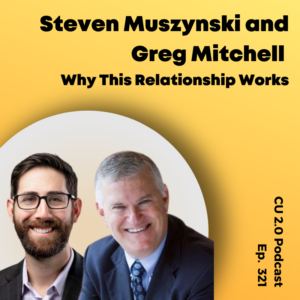Just when you thought business couldn’t get tougher—most credit unions now are wrestling with collapsing loan revenues as interest rates continue to tumble. And yet, more non-bank competitors enter the fray.
Sure, some experts shrug them off. The ABA Banking Journal, in a recent story about the rise of non-banks, features this quotation: “‘I saw the other day that I can get a bank account with T-Mobile or something, but I don’t want to bank with T-Mobile—I just can’t imagine that there will be millions and millions of American that are,’ remarks Canapi Ventures partner Walker Forehand.”
I can imagine it and my advice to you is do likewise. You do not have to open a T-Mobile banking account. But work at understanding why some of your members will.
And it’s not just T-Mobile. Suddenly, everybody from neo bank Lili—featured in this CU2.0 write up—and of course Apple (with Apple Pay and Apple Card) is plunging into banking.
Coming down the pike, at a fast speed, is Google Plex, a banking app via the search giant, and already a handful of financial institutions have signed on as partners. Included are Citibank but also Stanford Federal Credit Union and SEFCU in New York.
They Do Not Want to Be Banks or Credit Unions
The worst bit—from a credit union executive’s point of view—is that many of these players are getting into this not because they want to be a bank (or credit union). They usually do not. Their play is different. Google for instance is getting into the game because it sees upside in becoming a fintech vendor (memo to Fiserv and FIS, run for the hills pronto) and, always, Google has an insatiable appetite for data and banking is a rich treasure chest of consumer and merchant data.
As for T-Mobile, my guess is that it too has scant interest in actually being a bank (which it is not and has announced no plan to become). Know that T-Mobile is the third largest wireless carrier in the US (with around 100 million subscribers). Verizon is second with 120 million customers. AT&T is first with 175 million.
T-Mobile very much wants ways to bind their customers more tightly to T-Mobile—and maybe even to woo Verizon and AT&T customers to T-Mo. Customer churn is a cellular industry obsession and a bank-like account just might keep a customer more closely bound especially if services such as automated payroll deposit are in the mix. And T-Mo has that covered.
In fact, the T-Mo banking package has lots of built-in appeal.
For the record, I have had an account with T-Mobile for many of the past 20 years and my primary account today is Google Fi which rides on T-Mo’s rails. That existing, longterm account relationship is why I often eyeball T-Mobile offerings but ignore pitches from Verizon, etc.
The T-Mobile Banking Pitch
Here’s the crux of the T-Mo pitch:
- *4% Annual Percentage Yield paid on checking balances
- *No account fees.
- *55k fee free ATMs (the Allpoint network)
- *Get paid up to 2 days early with payroll direct deposit
- *FDIC insured.
You read that latest bullet right. The account is insured through BankMobile, a division of Customers Bank, headquartered in Phoenixville, PA and itself a player in Google’s foray into banking.
Of course, T-Mobile has an asterisk next to the 4.0 rate. Here’s the fine print: “Everyone earns 1.00% APY on all balances. T-Mobile wireless customers with qualifying service can earn 4.00% APY on balances up to $3,000 and 1.00% APY after that in their T-Mobile MONEY checking account by depositing at least $200/month and registering for perks.”
Is that enough for one of your members to close the account and move it all over to T-Mobile? First of course they have to be a T-Mobile customer—but 100 million of us already are. And with number portability, the carriers’ hold on customers weakened substantially. T-Mo just might win some new customers with this package.
Will your members join the exodus? That’s the crucial question.
“Half Lost” Members?
My bet is you will half lose some members. “Half lose?” I envision a banking world where, increasingly, we have many financial service providers, each filling a role. Maybe a car loan from BMW, a home loan from Quicken, a credit card from Amazon (aka Chase), a savings account here, and a checking account there
What’s your survival plan for that environment? Signs are multiplying that you need exactly that plan. Soon. Like tomorrow. Because the competition will only get tougher and more numerous.
The obvious, good bet is to make haste to strengthen digital member service. Member service just could be the credit union distinction even in the digital realm. The other smart move: slice and eliminate as many checking related fees as possible. Credit unions, many of them, have long positioned themselves as lower fees than community banks—true enough—but the neo banks are upping the stakes.
Don’t dawdle, however. After T-Mobile banking, who’s next? Start defending your turf now.
Keep Up with the Times
CU 2.0 is your resource for credit union technology and fintech trends. Join our newsletter and our Facebook group to stay on top of the industry.
If you want a more personal touch, CU 2.0 provides free coaching and market reports. Our Quarterly Fintech Call series is open to credit union executives who want to keep an ear to the ground. Once per quarter, we’ll schedule a 30-minute call to discuss new fintechs, partners, and technologies in the industry. Email Chris Otey to learn more!




